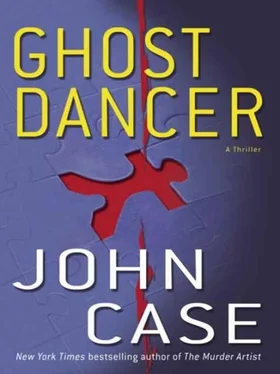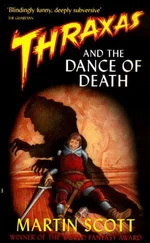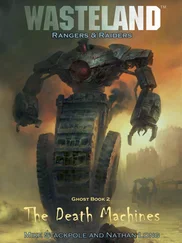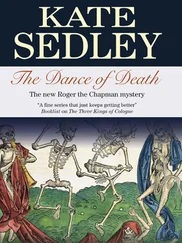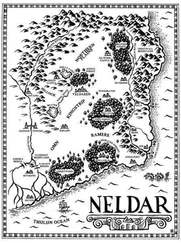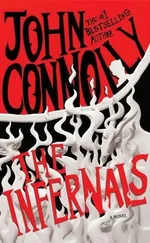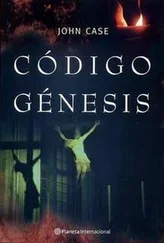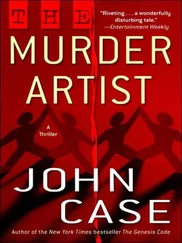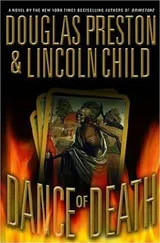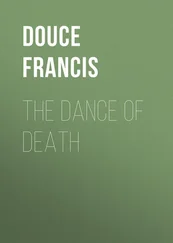No one said anything about Culpeper. Culpeper wasn’t a story yet.
“But this wasn’t just any hacker or virus,” one reporter insisted. “This was financial terrorism.”
Banks in time zones to the west closed early.
International correspondents from Asia to Europe reported that trading had ceased on their exchanges.
The Fed chairman came on the air to announce that there was a “glitch” in the system. He reassured the public that computerized banking networks were built with safeguards and “redundant systems,” and that things would soon be up and running again.
And what about the plane? Had it been attacked? Or was the crash just a coincidence?
The vice president urged calm from an undisclosed location.
It was almost dinnertime, and Wilson was nearing Pittsburgh when the first news emerged from Culpeper itself.
Hysterical residents sketched a picture of a town littered with dead vehicles, where nothing electrical or electronic worked.
Those who’d made their way out of Culpeper brought the scene alive. Fires were blazing out of control, most of them ignited by truck or car crashes. Fire trucks and ambulances found it impossible to get to the scene.
Wilson hadn’t even considered fire, but of course he should have. The great quake that struck San Francisco in 1906 had done some damage, yes, but it was fire that wrecked the city.
It was shortly after Wilson crossed the border into Ohio that a voice first mentioned the possibility of an “electromagnetic pulse.” On an NPR talk show, a roundtable of experts batted the subject around. One panelist, a retired nuclear physicist, did his best to explain the phenomenon. But when he started talking about “Compton recoil electrons,” the host interrupted him.
“But what would cause it? That’s the concern.”
“Well, it’s very strange that the effect is so localized,” the expert said drily. “I can’t begin to explain that. But generally we see an EMP as the side effect of a thermonuclear detonation.”
Panicked callers swamped the switchboard. The expert backpedaled. Yes, it could have been something else: a solar flare, perhaps, or some kind of “anomalous lightning storm.”
Within minutes radio stations were airing reassurances by government officials: No radiation had been detected in or around Culpeper.
Media helicopters surveyed the afflicted town, providing updates about the fires and traffic jams and immobilized vehicles. Medevac helicopters swept in and out of the town’s airspace, ferrying patients from the regional hospital to facilities in Washington.
Eventually, a handful of Culpeper residents found their way to the airwaves. And that’s when some of the wilder reports began to circulate. The sun had blinked out – just for a moment – and then the cars died.
Wilson was near the Indiana border when he first heard that a swarm of black helicopters had been seen just before the pulse hit. Another resident mentioned the sighting of a chupacabra. A third reported seeing “a saucer-shaped vehicle in Rick Marohn’s cornfield.”
On the outskirts of South Bend, he stopped for a six-pack and a Subway sandwich, then took a room at a Ramada. By then, it was all Culpeper, all the time.
ATLANTIC CROSSING | JUNE 8, 2005
Cruising along at thirty thousand feet, Burke had to agree with Tommy. It was a fool’s errand, no doubt about it. He was headed for a trailer park in Nevada to look up a woman who was very unlikely to help him.
Still, above the clouds and power lines, it felt right. It was the next logical step, and he had to take it. He looked out the window, into the plain blue sky. He wouldn’t admit it to Tommy, because he knew it sounded crazy, but it seemed to him that his search for Jack Wilson was being driven by forces outside himself. That he and Jack Wilson were fated to come together, like blips on a radar screen. What would happen when they met, he didn’t know. He couldn’t worry about that yet.
What he did worry about was getting through Immigration.
The rules for dual citizens holding U.S. passports were clear: You must travel on your U.S. passport when entering or leaving the United States. He thought about taking a chance and using his Irish passport, but Kovalenko had probably put him on some kind of lookout list. Using his Irish papers would be breaking the law – and if they caught him, they might not let him in.
Or worse.
When it was his turn to step over the yellow line, the Latina at his entry station took one look at the VALID ONLY FOR TRAVEL TO THE UNITED STATES stamp, and immediately picked up the telephone. She seemed nervous, punching numbers into her computer. She slid his passport through a scanner, and then gave him a worried look. “We have to wait for my supervisor.”
A big man in uniform came over to consult. There was a certain amount of keyboarding and then the big man shrugged.
“He doesn’t need a passport to travel inside the country. Stamp it,” he said, and the Latina did. To Burke he said: “You can’t leave the country on that passport. You do understand that?”
He did.
During the plane’s long taxi toward the arrival gate, the captain had aired a vague announcement about “delays.” Aer Lingus personnel would be standing by to advise. Burke hadn’t really paid attention. Once he’d cleared Immigration and Customs, he had to get to a different terminal and catch a flight to Reno on America West.
But it was evident inside the terminal that something had happened. The place was thronged. There were crowds around the few TV monitors. People were talking, and even without listening to what they were saying, he could sense the excitement and alarm in their voices, the whine of anxiety.
“I think it’s terrorists,” pronounced a man in blue jeans and a Nuggets T-shirt.
“They’re saying it’s one of them solar flares,” his wife insisted.
Those who had been in the air when it happened, like Burke himself, had to play catch-up. All flights were grounded. Bunchy lines of impatient travelers waited to harry airline agents, seeking vouchers and information.
Mostly there was no information. Everyone watched the news, glued to small screens featuring wall-to-wall coverage of a complex nightmare that had already been condensed into a single word: Culpeper.
It took Burke a few minutes to grasp the parameters of the story and when he did, he realized what had happened – and who, and what, was behind it.
He made his way to Terminal 7 and found a little square of territory on the floor. He sat on his suitcase and waited, his eyes on a television monitor.
Helicopter footage showed the hundreds of stranded cars, some of them charred wrecks, and then a montage of burning buildings. The chopper flew low enough so that Burke could see people standing in the street, waving at the camera. Abruptly, the coverage shifted to the site of the airplane crash. Huge pieces of wreckage were being moved by machines. A different reporter interviewed family who’d been waiting for the plane at Dulles. The crawl at the bottom of the screen said that eighty-seven passengers and eight crew members were presumed dead. In Culpeper again, a handheld camera showed shaky footage of men with crowbars trying to pry open an elevator. Inside a hospital corridor, a weary doctor spoke, while the crawl noted that fourteen persons had died, four in mid-surgery and the remainder when life-sustaining equipment failed.
At three a.m. – late morning in Slovenia – Burke called Luka Ceplak.
“Michael!” Ceplak roared. “I missss you. How are you?” A heavy sigh. “I know why you call,” he said, his voice somber now.
Читать дальше
